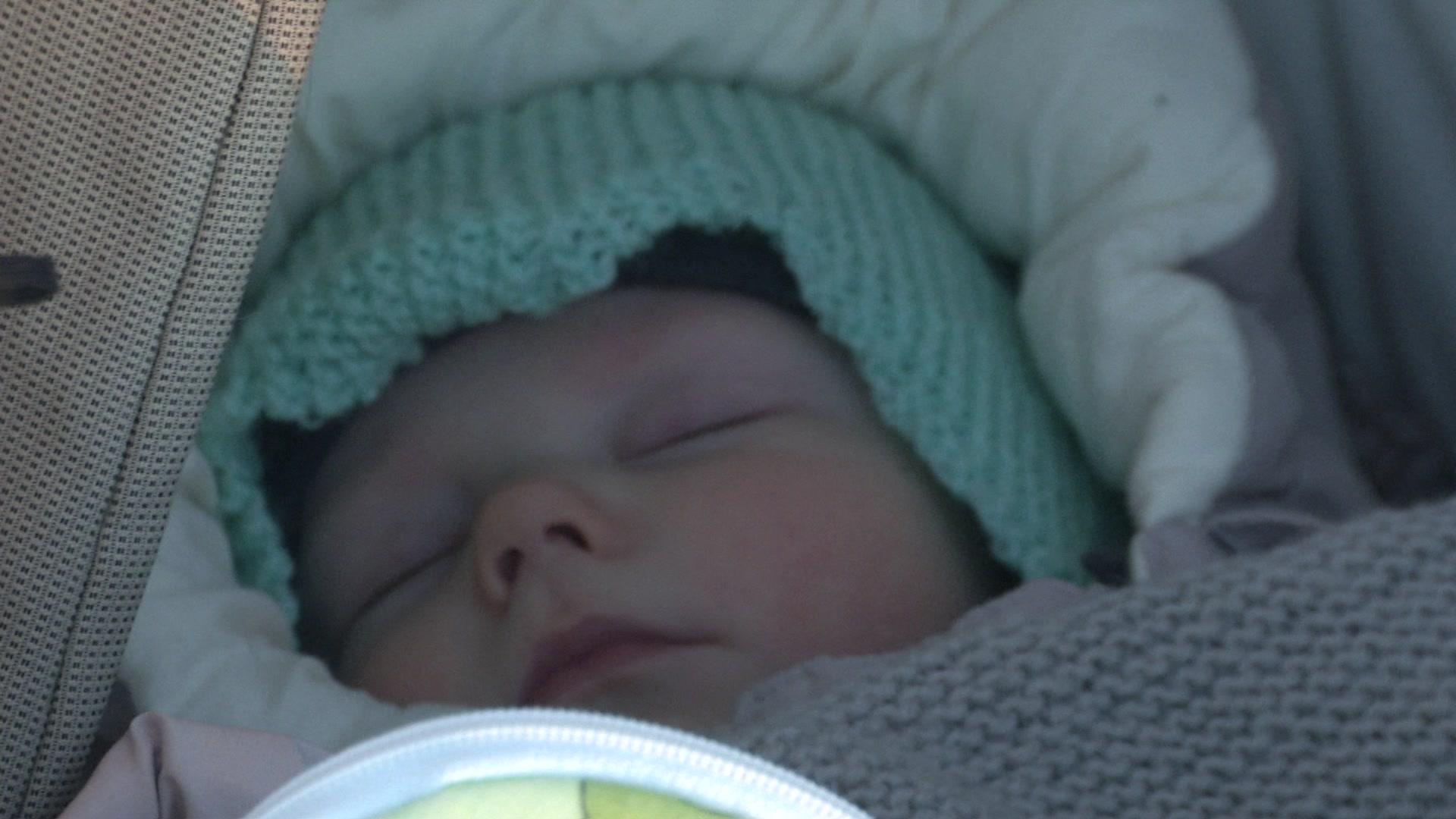The dilemma of choosing where your baby sleeps
- Published

Negotiating the assault course of toddlers and pushchairs outside the Baby Show at Olympia in west London I am eager to see what all the fuss is about.
The show is enormous and with most of the 225 exhibitors offering discounts of up to 50%, it's easy to understand why 25,000 people are expected to flood through the doors this weekend.
Parents are spending more than ever on their children. Sales of baby products such as furniture, clothes and food are rocketing.
On sale at The Baby Show.
The Baby Show takes place around the UK three times a year - two events in London and one in Birmingham - and has seen an almost 30% rise in spending from year to year.
The 2014-15 shows saw visitors spend over £30m, while at the 2015-16 events, more than £39m was spent.
Be the best
The pressure to provide the best is clear when you take a look at popular parenting discussion site Mumsnet, external. The number of threads in the forum about how much to spend on various items is staggering.
And as new entries to the market bring different ideas and innovative products, the spending pressure on parents grows even more.

Family-run business East Coast has been selling cots for 55 years
Take cots, for example. The decision to buy one should be simple. A baby needs somewhere to sleep.
But should the child be in a Moses basket or crib before a full-size cot? Do you also need baby positioner supports? What about the wide variety of pods, wraps, pillows, mats and even "nests" available out there?
The choices are overwhelming.
Sleeping easy
Jenny Ward, director of services at the Lullaby Trust, which provides expert advice on safer baby sleep, is very clear on what is required.
"Babies need their own sleeping place, although it can be in the same room as parents. They need a firm, flat, waterproof mattress. Bedding must not be too loose as it could become a danger by covering their head and it must not make the baby too warm," she says.
Beyond that, she says it is up to parents to make decisions on the type of cot that fits in with their lifestyle.
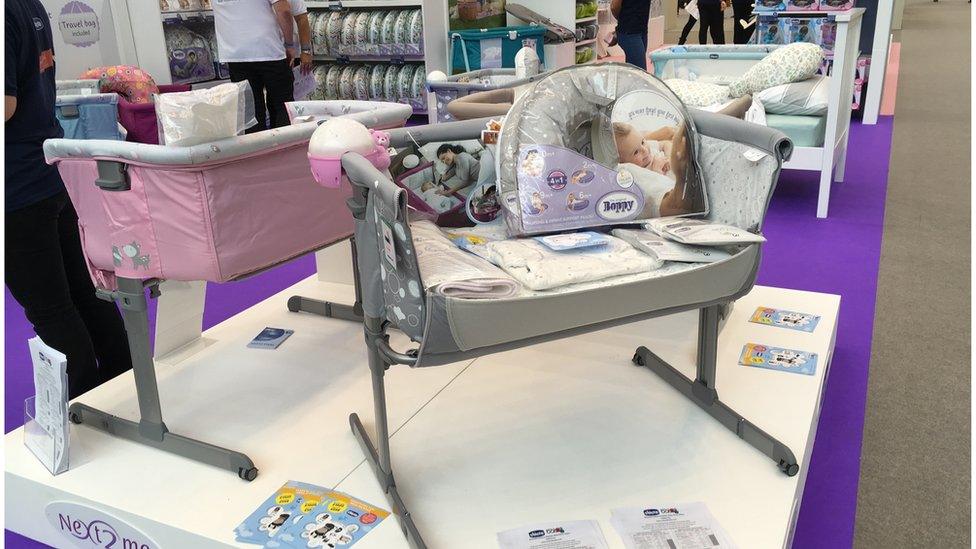
Chicco Next 2 Me cots on display at the Baby Show
Some of the biggest sellers at John Lewis are cots where the side drops down completely, allowing a mother to have it positioned almost as an extension of her own bed.
This "co-sleeping" design is particularly popular with breastfeeding mothers, and sales at the department store are up 134% compared with last year.
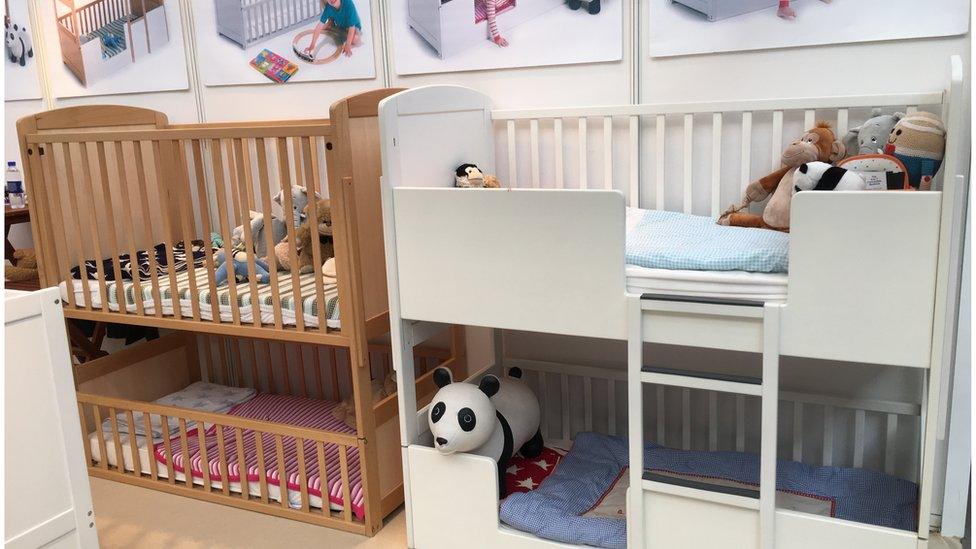
The Bunkcot Company designs two-tier cots
On the cot market you can also find: bunk cots - a space-saving option for twins or for a toddler and infant sibling combo; cots with storage built in underneath; ones that can convert into beds as the child grows; the options go on and on.
Utmost luxury
The top end of the market is epitomised by London-based Dragons of Walton Street. The showroom in Harrods, Kensington, is a sight to behold.

The Little Duchess cot by Dragons of Walton Street costs nearly £14,000
Princess Diana commissioned the company to design nurseries for Princes William and Harry. Its cots are, quite literally, fit for a (future) king.
The Arab and Russian markets are very important for the brand.
"We are currently working on a big project in Abu Dhabi," says global sales director Simon Croft. "It's a complete redesign of four bedrooms and we are flying a team out to install everything."
Discretion is key at Dragons, and Croft won't comment on the price of such a job, but it would certainly be beyond the reach of most parents.
As is the world's most expensive cot, the €12m (£10.7m) Dodo Bassinet by Suommo. Made of solid 24-carat gold it takes six months to build and weighs 188kg.
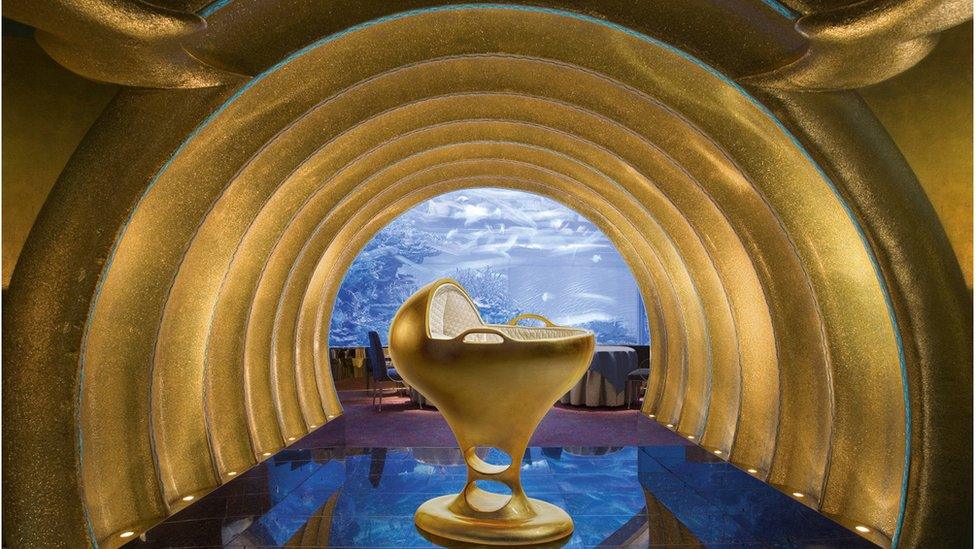
The solid gold Dodo Bassinet
Suommo's chief executive and designer Ximo Talamantes says his creations are "works of art". He is currently working on a special project for the Dubai royal family.
Child trend setters
There is no doubt that celebrity endorsements and trends are followed closely by parents these days. Generally speaking, whatever Harper Beckham, the Kardashian kids and other famous tots wear sells out.
The same is true of sleeping arrangements. In April 2013, the Duchess of Cambridge was spotted buying, external a Moses basket while pregnant with Prince George at high-end shop Blue Almonds. Sales immediately picked up.
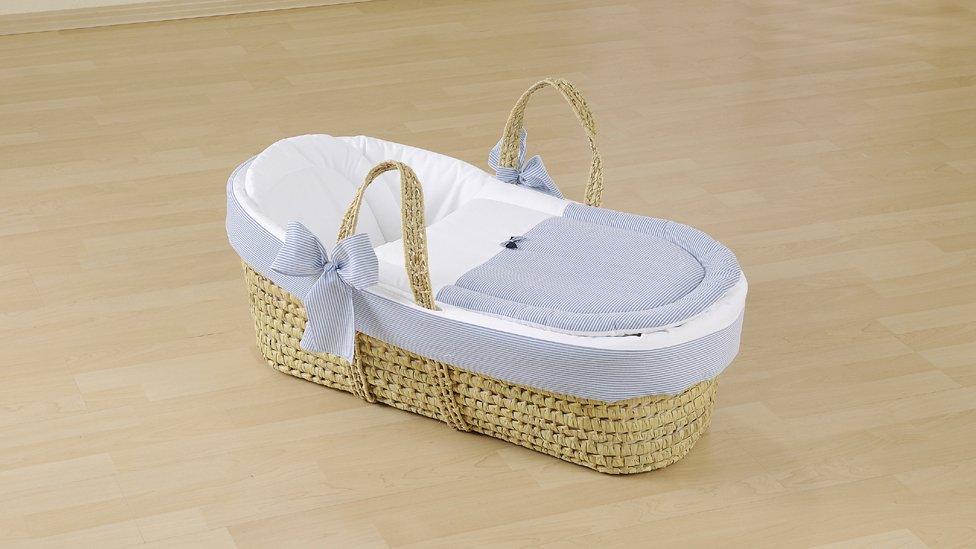
A Blue Almonds Moses basket
Beyond the products we would all think of as traditional for a sleeping baby, the market has exploded in recent years.
From cushions and pads, designed to keep a baby in a particular position, to pods, hammocks and cocoons all meant to recreate an enclosed "womb-like" sleeping environment, the list is endless. At the Baby Show some 31 stalls are categorised as selling "sleeping" products.
Jenny Ward from the Lullaby Trust says these items are simply "not necessary".
Desperate times
But for a desperate parent, with a child who just will not sleep, anything is worth a try.
"There's not much that exhausted parents won't do to help their baby sleep, budget permitting," says Kate Williams, editor at Mumsnet.
One such story is what led Charlotte Marshall to design the Poddle Pod. In November 2011 her son Deacon was born.
"He just did not want to be put down," Charlotte says. "He would fall asleep in my arms and then wake up after a few minutes if I tried to put him down anywhere."
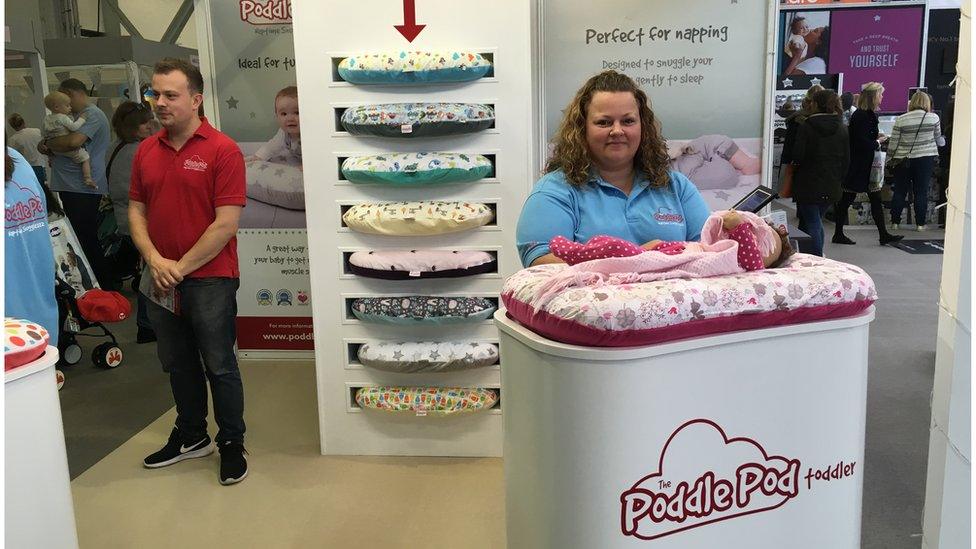
Charlotte Marshall and her team selling the Poddle Pod at the Baby Show
After reaching the point of desperation, she and her mum came up with the £49.99 Poddle Pod, a design that fits snuggly around the child, imitating the feeling of being held.
While the Poddle Pod is not recommended for overnight sleeping, there are other similar products on the market which are.
John Lewis has seen sales of the Sleepyhead pod range, which starts at £110, more than double compared with last year.
"Conversations on Mumsnet indicate that people buy Sleepyheads for quite specific reasons - often because they've found that their baby won't take to a cot - and so despite the expense, the product seems to be successfully meeting a particular need," says Mumsnet's Kate Williams.
- Published4 April 2016
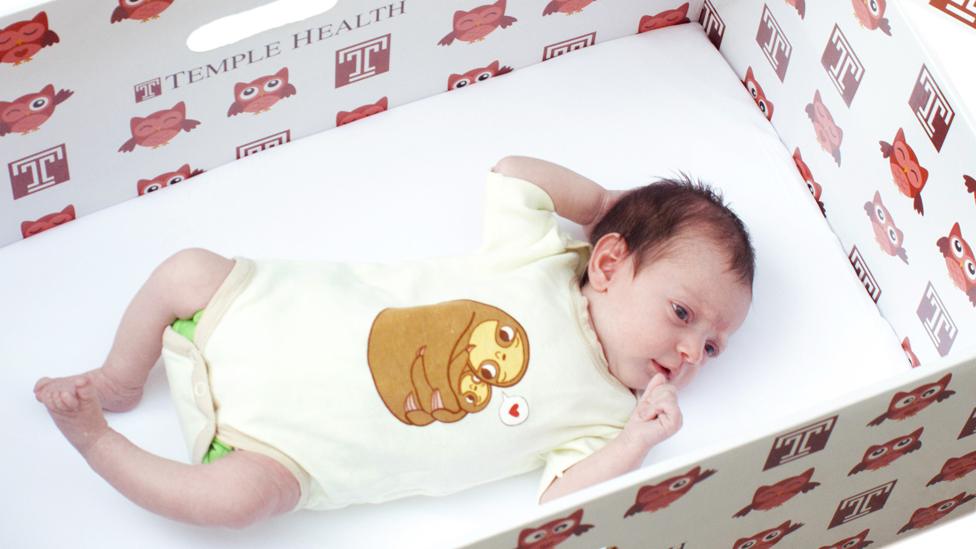
- Published14 October 2015
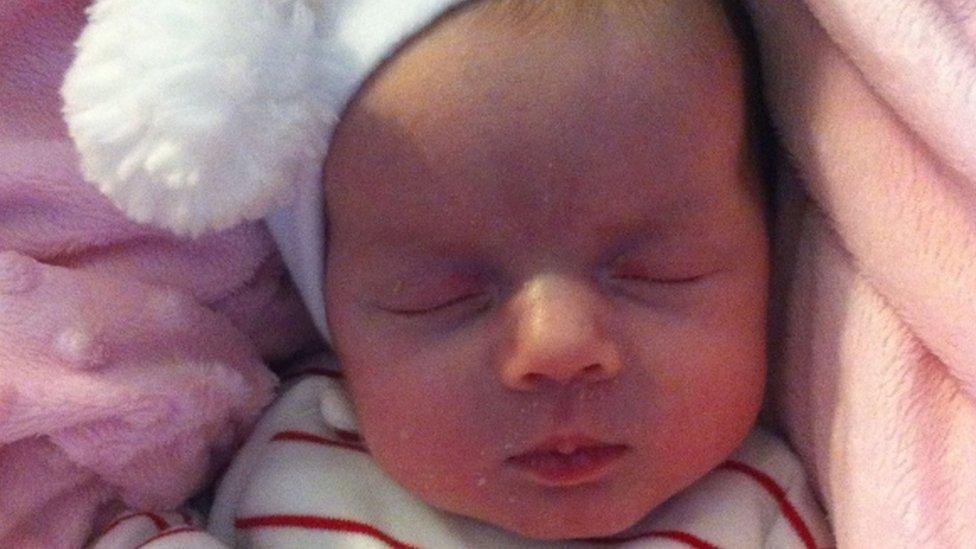
- Published21 February 2015
